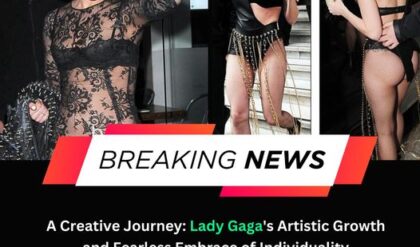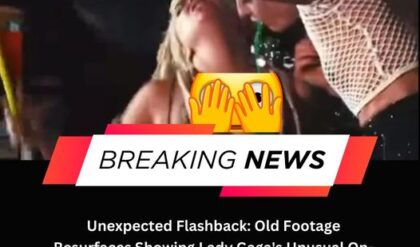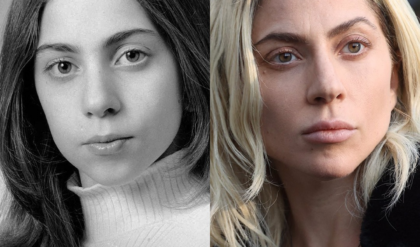Lashana Lynch became the first woman to own the 007 title in the 2021 James Bond tentpole “No Time to Die,” but it turns out a plan to make James Bond a woman was actually pitched over 60 years prior.

Everett Collection
In Nicholas Shakespeare’s upcoming biography of Bond author Ian Fleming, titled “Ian Fleming: The Complete Man,” it’s confirmed that producer Gregory Ratoff floated the idea of casting Susan Hayward in a film adaptation of Fleming’s first Bond novel “Casino Royale.”
Shakespeare writes in the biography (via IndieWire): “Since the mid-1950s, many well-known actors had been approached [to play Bond]. Gregory Ratoff had the arresting idea of having Bond played by a woman, Susan Hayward.
Ian had entertained several possibilities, from Richard Burton (‘I think that Richard Burton would be by far the best James Bond’), to James Stewart (‘I wouldn’t at all mind him as Bond if he can slightly anglicise his accent’), to James Mason (‘We might have to settle for him’).”
Hayward was a five-time Oscar nominee for best actress and won the prize for 1958’s “I Want to Live!” She earned nominations for 1947’s “Smash-Up, the Story of a Woman,” 1949’s “My Foolish Heart,” 1952’s “With a Song in My Heart,” and 1955’s “I’ll Cry Tomorrow,” the latter of which won her best actress honors at the Cannes Film Festival. She also starred in the infamous “Valley of the Dolls.”
Popular on Variety
Screenwriter Lorenzo Semple Jr. spoke to Variety back in 2012 and claimed at the time that Ratoff was interested in Hayward because “frankly, we thought [Bond] was kind of unbelievable and as I recall, even kind of stupid. So Gregory thought the solution was to make Bond a woman, ‘Jane Bond’ if you will.”
The idea was apparently never a serious consideration for Fleming, who ultimately wanted to make Richard Burton the first on-screen James Bond. Burton declined. Shakespeare’s book reveals Peter Finch, Cary Grant, Dirk Bogarde, Trevor Howard, Rex Harrison, Richard Todd, Michael Redgrave, Patrick McGoohan, Roger Moore (who did end up playing Bond later) and Richard Johnson were all considered for 007 as well.
The first James Bond movie to actually get off the ground was 1962’s “Dr. No,” which included the iconic casting of Sean Connery as James Bond. However, Fleming was “shocked” when he met Connery in real life for the first time “because [Connery] couldn’t speak the Queen’s English.”
“Fleming said, ‘He’s not my idea of Bond at all, I just want an elegant man, not this roughneck,’” Fenn remembered.
Connery’s casting would make him a film icon. He’d reprise the role of Bond in five more 007 movies: “From Russia With Love,” “Goldfinger,” “Thunderball,” “You Only Live Twice” and “Diamonds Are Forever.”
“Sean Connery was the right guy in the movie for the right time,” longtime Bond producer Michael G. Wilson says in the book. “If it hadn’t been Sean, who knows? Would it have captured the attention of the whole world?”
“It was the sheer self-confidence he exuded,” adds producer Barbara Broccoli about Connery. “He walked like the most arrogant son-of-a-gun, you’ve ever seen – as if he owned every bit of Jermyn Street from Regent Street to St James. ‘That’s our Bond,’ I said.”
There’s currently no James Bond on the big screen following Daniel Craig’s exit after “No Time to Die.” Reports have surfaced in recent weeks claiming that Aaron Taylor-Johnson is being cast as the next 007 on the big screen, although Eon Productions have not yet confirmed. Pierce Brosnan, who played Bond in four movies, recently gave Taylor-Johnson his blessing.
“I think the man has the chops and the talent and the charisma to play Bond, very much so,” Brosnan said of Taylor-Johnson during an interview on “The Ray D’Arcy Show,” adding: “I read the news about his possibilities of being a Bond, so I would definitely tip my hat to the fellow.”
News
A Creative Journey: Lady Gaga’s Artistic Growth and Fearless Embrace of Individuality
The weirdness and craziness of star Lady Gaga’s outfits have been increasing every day. Even if she were dressed in rags and beggar clothes, no one would be surprised. Lady Gaga created her own unique, shocking fashion line that no…
Gaga’s Street Style: No Bras, Semi-Sheer Top, and Daring Daisy Dukes in NYC
Lady Gaga recently unveiled the much-anticipated track list for her latest album, Joanne, and she is certainly not shying away from the limelight. The singer was spotted in New York on Saturday confidently flaunting her unique fashion sense. Her daring…
VIDEO : Unexpected Flashback: Old Footage Resurfaces Showing Lady Gaga’s Unusual On-Stage Act with a Girl Vomiting on Her Chest
It’s come back up. A clip of a woman making herself vomit on Lady Gaga during her SXSW performance in 2014 has resurfaced online — and the bile hasn’t aged well. Gaga, 36, incorporated performance artist Millie Brown into her choreography…
My First Piano Teacher Was a Stripper’: Lady Gaga Reveals Dad Hired a Stripper as Her Music Teacher, Linking it to Her Signature Long Nails
Lady Gaga is one of the popular artists who’s known for image reinventions and musical versatility. She rose to fame with her debut studio album, The Fame in 2007 with its chart-topping singles Just Dance and Poker Face. She is not only…
20 Bizarre Photos Prove That Lady Gaga Is The Most Unhinged Fashion Icon Ever
One of the most iconic and multi-talented artists of our time, Lady Gaga, with worldwide hits such as Bad Romance, Judas, and Born This Way, is also known as a composer, an actress, and above all, a fashionista. Known as…
Lady Gaga Goes Makeup-Free for Oscars Performance, Letting People See the Real Her
Oscars executive producer reveals Lady Gaga decided to go makeup-free during her performance to show people the ‘real’ her. Featured Image Credit: ABC Yesterday (March 13), the musician stunned viewers with a performance of the Oscar-nominated song ‘Hold My Hand’…
End of content
No more pages to load











